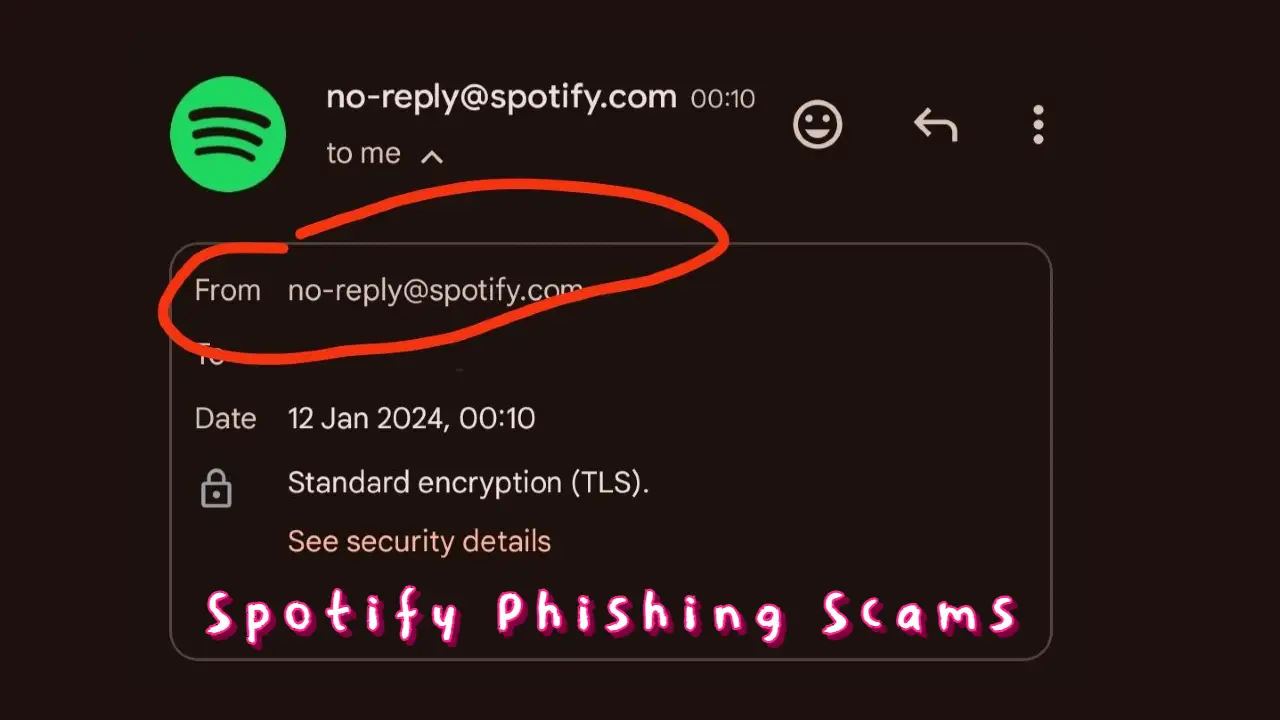With hundreds of millions of users throughout the globe, it should come as no surprise that scammers take advantage of Spotify’s popularity and reputation. Spotify phishing scams have become more common, but there are several steps you can do to protect yourself from them.
This phishing attempt can expose victims to a wide range of possible security dangers. To make their password simpler to remember, many users, for example, involve their birthdate or other personal details in it. If a hacker succeeds to obtain a user’s Spotify password, they have an insight into the victim’s credential-creation process, which could allow them to get access to the user’s other accounts.
Thankfully, users may take a number of precautions to protect themselves from dangers such as the Spotify phishing attempt. Take a look at these suggestions:
What is the Spotify Phishing Scam?
How It Works
The Spotify phishing scams typically starts with an email that looks like it’s from Spotify. The email may claim that there’s an issue with your account, such as a payment problem or a need to verify your account details. It then prompts you to click on a link that directs you to a fake Spotify login page. If you enter your credentials, the scammers now have access to your account information, which they can use for malicious purposes.
I’ve received emails with subject lines like “Important! We noticed unusual activity in your Spotify account” and “Your Premium payment failed,” both designed to get you to click on the link below. You can see what these Spotify phishing emails look like by clicking on the pictures I’ve provided below.

However, the email is fraudulent, and clicking on the link will lead you to a scams payment site intended to steal your bank details. When I scroll over the alleged link to reset my account or verify my information, the URL seems to be a lengthy, random alphanumeric character. It has nothing to do with Spotify at all, yet it almost seems real.

As I was clicking through this link, my browser alerted me that I was going to access a phishing link and advised me to stop right away. I don’t recommend doing this.
How to Spot a Spotify Phishing Scam
Recognizing a Spotify phishing scam can be tricky, especially since the emails and websites used by scammers are often designed to look legitimate. However, there are several telltale signs, such as generic greetings like “Dear Customer,” poor grammar and spelling, and URLs that don’t quite match Spotify’s official domain. Additionally, these scams often create a sense of urgency, pressuring you to act quickly.

Sender Address: “no-reply@spotify.com” is the account from which official Spotify emails come. For instance, the account from which the reset link will be issued is the one from which you will receive a Spotify password reset (refer to the image above). Although email addresses may be faked, any reputable email service will use standard email security mechanisms to prevent the use of registered domains like Spotify’s.
Fake Links: As previously pointed out, the URL of any link in the Spotify phishing email will appear when you hover your mouse over it. Emails requesting a password reset from Spotify come from “accounts.spotify“; all other addresses are bogus. This should simplify the process of removing fraudulent emails, along with the sender address.
Conclusion
The Spotify phishing scam is a serious threat that can have significant consequences if you’re not careful. By understanding how these scams work, recognizing the warning signs, and taking proactive steps to protect yourself, you can reduce the risk of falling victim to these malicious attacks.
Frequently Asked Questions (FAQs)
If you receive a suspicious email, don’t click on any links. Instead, report the email to Spotify and delete it. Always access your Spotify account directly through the official website or app.
Yes, Spotify can assist you if you’ve fallen victim to a phishing scam. Contact their support team immediately to secure your account and recover any lost information.
To verify the authenticity of an email from Spotify, check the sender’s email address and look for any signs of phishing, such as suspicious links or poor grammar. When in doubt, contact Spotify support directly.
Yes, besides phishing, there are other scams targeting Spotify users, such as fake promotional offers or fraudulent websites selling discounted subscriptions. Always be cautious and verify the legitimacy of any offers or communications.
If you’ve been a victim of a phishing scam, several resources can help, including your bank, cybersecurity experts, and platforms like the Anti-Phishing Working Group (APWG). Spotify’s support team is also available to assist.



